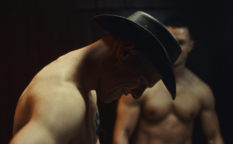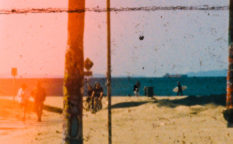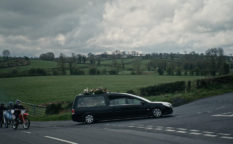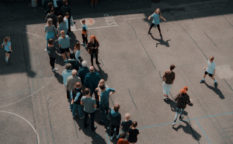Reflections 5
It’s 10pm on a Saturday night as I sit down to write. I wanted (intended?) to write this on Monday. It’s not unusual for such intentions to fall by the wayside; I’m full time mum to a one-year-old. But what is unusual, is that the reason it’s Saturday and not Monday is because I couldn’t start writing until I’d finished reading something that has been calling out (to/at) me.
I used to be embarrassed by the pace at which I read: slow. I read everything – everything – like I would if I were reading it aloud to an audience. It takes time because I need to feel its tone and affect as well as comprehend the syntax and words. But I can’t write if I don’t read. This is because I don’t invent, I respond; to art, to others, and even to myself. It’s not because that’s how I understand the role of the critic (although I do) but because it is, quite simply, who and how I am.
I listen as I read.
I’ve just finished reading/hearing Jemma Desai’s This Work Isn’t For Us. I now speak for myself in my description of and relation to it, and not for or in place of Desai. I hope and intend for my relationship to the work to be my own honest reflection and not in any way of trying to surmise or co-opt or simplify or in any other way disrespect her work, or the work of anyone else. I write about it only from my own experience of listening to it.
As such, I heard research, reflection, writing and a self-described autoethnography. I saw it hold truth and embody feelings, structures, work and narration. It is, I believe, a most open and honest documentary of the UK’s cultural arts. It is not technically a moving image work, but it is the soul and work of an artist as bold, brave, generous, and sincere as any reality or imagination could muster. It called me out and it called out to me and I sit now, thinking about listening.
I hear Desai and I see the pictures of the industry in which I work, and in which I am, by my engagement with it, complicit. The images are simultaneously plain and piercing; the framing is radical yet steady. She talks about economic motives versus social injustice. This is always on my mind as I continue to weigh up the costs of cultural work; written, filmed, distributed, exhibited, felt.
“Public programming ties commerce (via ticket sales and audiences) to what are inherently social dynamics, creating a transactional relationship between audience and institution,” Desai writes. In our pandemic present, such cinematic commerce and social dynamics are damned. It might be an opportunity for audience and institution to forge a new relationship, or it might be a moment where the two part ways more permanently.
I’m thinking about it a lot because I am also just weeks away from returning to such cultural work as UK lockdown further eases. I am also participating in a short course for women in the industry, run by Bird’s Eye View, a self-professed “not-for-profit that centres the female perspective in film and campaigns for gender equality in all film spaces.” The Pandemic Response Programme, as it is called, takes place on Zoom, so it is, in a way, the images that background what I read/hear in Desai’s documentary. This week, Gaylene Gould led our session, asking us to contemplate and explore space; already full of matter, being, but also being filled. Gould’s industry experience is vast and includes a couple of years as Head of Cinemas at BFI Southbank in London. Desai’s work is about how such institutional spaces are and enact whiteness. This resonates with what Gould talked about, what cultural leadership should be; embodiment over strategy, facilitation over delivery. It is also, as she so aptly put it, important that “one always speaks for oneself, unless you are asked to speak for others.”
I am also thinking about how what I heard (and saw) on Zoom as part of Dokufest’s DokuTalks this week – more images to Desai’s written, felt documentary. Anna Serner, Director of the Swedish Institute, and Brigid O’Shea, co-founder of Documentary Association of Europe, talked about embracing new realities, “Beyond 2020 Into a New Normal”. Talking about psychological and perceived boundaries, gates and gatekeepers, O’Shea said, “The doors are open.” But they’re not. She admits, however, that solving things, “making an action plan” as it were, is “how a white privileged person starts.” But what if we were to start with listening instead? Could we listen, or are we all too busy filling that space Gould talked about exploring? Shouldn’t there be more space to explore in a world defined by social distancing and isolation? Or have we been too busy filling it with Zoom faces to listen to the decades of oppressive policy that needs urgently to be reimagined? Can we even imagine reimagining if we are still guided by the principles of that transactional relationship Desai painstakingly documents?
“I can’t imagine the outcome of this crisis will be anything other than apocalyptic recession,” O’Shea says. If that is true, then to whom do resources belong? How will we understand value in a capitalist structure that insists on its own persistence despite monolithic collapse? “We can define our profits for ourselves,” O’Shea says, “…return on investment, audience development, diversity riders…” This might be hopeful if it weren’t still dependent upon transactional exchange. For Serner, the question returns to what or who the industry (wants? or is?) funding, “Are we funding persons or films? Industry or stories?” she contemplates, before settling on, “We are funding the stories in the culture.”
I don’t know what that culture is. Speaking, again, only for myself as no one else has asked me to speak for them, culture could be anything from Iraqi migrants settling in England as British Subjects after living in 1940s India to 2000s Australian enthusiasm squashed by passive-aggressive British classism, or the first generation educated upward mobility of middle-class capitalist pursuit. Or maybe it’s just the culture of trying to earn a living in an industry that looks glamorous (oh how I miss the big screen experience) but doesn’t listen to the bodies it chews up and spits out because it’s too busy perpetuating its transactional symbolic order.
Desai’s documentary is beautiful work and it hurts to read, to listen to the words of such a bright mind, gaslit and belittled. Yet so strong. It is not written in the language of the institutions – it is neither an application for funding nor a report against so-called activity – and it asks simply to be heard. It is a documentary that cannot be screened in a cinema or on the white wall of a gallery because it cannot be held by those spaces because the doors are not open to be explored. Instead, they are already filled with whiteness and the transaction of that history. And so, this brilliant documentary lives in the body of Jemma Desai, and clear, articulated on the page, if only we would make space to listen.
















